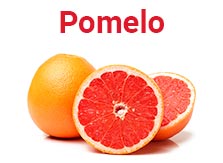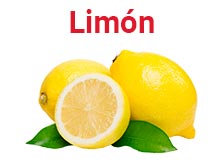Table of Contents

We can help you in the storage, transport and preservation of grapefruit and all kinds of citrus. This is a fruit that has the shape of a slightly flattened globe and is yellowish-reddish in color, and it is said that it comes from the cross between sweet orange and grapefruit. We are talking about a fruit known worldwide for its characteristic bitter taste, and it is usually taken plain or as juice.
Origin and varieties of grapefruit
The origin of this citrus is not exactly known. It is said that it took place in the West Indies, and that they were introduced by an English captain in Barbados, but there are no references to the fruit until the IX century.
Mainly we distinguish two groups of grapefruit varieties: the white ones; and the varieties with color. We will highlight those that we consider the most relevant within the Spanish market, from the perspective of Antonio Marco’s clients:
- Marsh Seedless: belongs to the white group. Its pulp looks light in color and its main characteristic is its rind, since it is thicker than the rest of the varieties. As its own name indicates, this variety lacks seeds.
- Duncan: This variety is mainly destined for the juice industry, due to its tender pulp and rich in juice.
- Ruby: This variety belongs to the group of color varieties. Its name is due to the pink color of its skin and pulp, which characterizes it. It has no seeds and is the reference product for those who prefer colored varieties.
- Star Ruby: it is the variety with the most intense color. Its flavor is less bitter and sweeter than the other varieties, with a thin rind and a high juice content.
Grapefruit season and harvest for subsequent conservation
The season begins in October and lasts until the end of May, with very little production in the hot months, since they are harvested in winter. It is true that the use of cold rooms is very important for the conservation of citrus fruits in periods of low demand, or excess supply.
With regard to grapefruit harvesting in Spain, we find ourselves with different post-harvest problems:
- Physiological:
- Skin discoloration
- Aging skin
- Pallor of the pulp around the seeds
- Fungus:
- or Aspergillus
- or Alternaria
Next, we will explain a series of key measures for cold storage of grapefruit.
Grapefruit storage for distribution
The importance of a logistics warehouse for the conservation of grapefruit is key. This citrus, one of the most consumed in the world, is very important for all cold storage companies in the Levante area. With around 30,000 tons produced, Spain is the tenth country in the world in grapefruit production. As for the national level, the Region of Murcia is the leader in the cultivation of this citrus.
Countries such as the United States, Israel and the Netherlands have gained weight in the European market, where they rely on logistics warehouses to store grapefruit in merchandise refrigerated rooms. In order to extend its useful life, and later, to be distributed in times when Spanish production does not meet the demand.
Grapefruit, a perishable food, requires a storage temperature between 8-12°C, depending on the customer’s requirements, this may vary. A key element in the good conservation of grapefruit is; the loss of water after harvesting, just as it happens with the mandarin. Low temperatures and high relative humidity around 90-95% reduce transpiration, retard water loss, and in turn reduce the development of pathogens, helping to extend their life.
Transport of grapefruit in Spain and the rest of Europe
Grapefruit is a commodity whose main export destinations are usually:
- Transport of grapefruit, Spain to Germany
- Transport of grapefruit, Spain to France
- Transport of grapefruit, Spain to Italy
- Transport of grapefruit, Spain to the Netherlands and Belgium
- Transport of grapefruit, Spain to Austria
The ideal temperature for transporting grapefruit is between 8-12ºC continuously, although it is true that grapefruit does not suffer much from temperature changes in the short term. The transport companies of Alicante and Murcia are focused on transporting grapefruit to international markets. We are companies that are close to the product, and our know-how, which we have achieved thanks to our years of experience.
We have seen that temperature-controlled storage is key, but this work will mean nothing if we do not carry out optimal refrigerated freight transport. Antonio Marco is clear that his logistics in Alicante is more than prepared to carry out this task, thanks to its Alicante logistics center located in Granada, Alicante. Antonio Marco is a company that can carry out the activities of: transport, storage and conservation of grapefruit.
At Antonio Marco we can help you transport and preserve grapefruit with a guarantee and good service.
If you want to read more about these citrus fruits, you can read our following posts.





